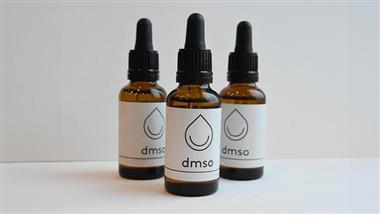
Flying fish hunt from below and above.

Tom's Blog on Life and Livingness

When you perform an act of goodness, the person you touched will also perform one, and soon, everyone will be happily helping each other.
In a landmark decision, the court has ruled in favor of Dr. William Bay, marking a significant win for those questioning mainstream COVID Vaccine narratives. This comes after a lengthy legal battle against the Australian Health Practitioner Regulation Agency (AHPRA) and the Medical Board of Australia, who unjustly suspended Dr. Bay’s registration as a general practitioner because he spoke out against the COVID vaccines.
I shared a clip of Dr. William Bay from a few years ago when he boldly spoke out against experimental mRNA gene therapy, often mislabeled as “vaccines,” to a group of uncomfortable indoctrinated doctors at a medical conference. You can view the original clip in this thread (Point Number 8) or read the entire transcript to see how the pharmaceutical industry subtly “indoctrinates” doctors.
Dr. Bay, known for his outspoken views on COVID-19 experimental vaccines, faced severe consequences, including a medical license suspension. However, the court found that the suspension decision was marred by bias and procedural unfairness. It’s a clear call to joy for the medical-truth community that has long advocated for transparency and fairness in healthcare regulations.
In his statement following the judgment, Dr. Bay did not hold back: “So, if I wasn’t clear before AHPRA, let me be very clear now. The vaccines are bad. The vaccines are no good. And people should be afforded the right to informed consent to choose these so-called vaccines.” His reinstatement means he can openly criticize vaccines without fear, a bold move that sets a precedent for other practitioners who wish to express their concerns freely.
The comprehensive ruling by Justice Bradley not only reinstates Dr. Bay’s medical license but also holds AHPRA accountable for the legal costs incurred throughout the proceedings. Dr. Bay is now free to practice medicine once again, which includes the ability to prescribe treatments like Ivermectin, a controversial but crucial option in his toolkit.
The ruling declared that decisions made by AHPRA and the Board were invalid, thus freeing Dr. Bay from the unjust limitations placed on his medical practice. The court pointed out several flaws, including a lack of evidence supporting any claims of misconduct and a failure to provide Dr. Bay a fair chance to defend himself. This legal validation suggests that AHPRA and the Board might have acted more out of political motivation than genuine public safety concerns.
For Dr. Bay, this isn’t just about regaining his right to practice medicine—it’s a triumph of his voice against bureaucratic overreach and a testimony to standing firm on one’s beliefs. And for the wider community, this verdict is a hopeful pointer to the necessity for accountability and fairness in the regulation of medical professionals.
Given the court’s findings, Dr. Bay should consider pursuing legal action for damages against AHPRA for the loss of income and potential harm to his reputation during this prolonged suspension. The court’s decision implicitly supports the view that he was unfairly treated, opening the door for further legal redress and, perhaps, compensation for the unwarranted impact on his career.
This verdict shines a light on the critical importance of rights to a fair hearing and underscores the role of rigorous judicial oversight to prevent the misuse of regulatory power.
Congratulations to Dr. Bay on this vindication—his case serves as a powerful reminder that justice, although sometimes delayed, is indeed achievable!
SOURCE TO FULL COURT JUDGEMENT: https://www.queenslandjudgments.com.au/caselaw/qsc/2024/315/pdf

Participants then took two different tests to check their cognitive function. Researchers found that people with lower levels of magnesium and calcium performed worse on both cognitive tests than people with normal levels. People with normal calcium levels but low levels of magnesium also scored worse than those with normal levels of both nutrients. Those with normal magnesium levels and low calcium levels did not test as poorly.

According to existing scientific evidence, choosing natural, side effect-free herbal formulas to treat acute ear infection and pain over synthetic antibiotics with questionable therapeutic efficacy is a reasonable and well-founded option.
Acute otitis media (ear infection) is very common in children and usually accompanied by ear pain, fever and irritability. Although it is believed that 80% of the otitis cases resolve spontaneously without any treatment, the standard medical approach relies on the prescription of antibiotics and anti-inflammatory drugs.
An independent review by the Cochrane Collaboration reports that antibiotic treatment for acute otitis is prescribed in 98% of cases in USA and Australia but only 38% in Netherlands. According to the latest guidelines of the American Academy of Pediatrics (AAP), the first line antibiotic treatment is based on moderate or broad spectrum drugs, such as amoxicillin and ciprofloxacin, while NSAIDs and paracetamol (Tylenol) are recommended for pain management. However, there is scientific evidence challenging not only the use of antibiotics, but the very necessity to use synthetic drugs to treat infection and ear pain.

•The therapeutic actions of DMSO make it well suited to treat challenging conditions throughout the body, including many of the internal organs.
•In this article, we will examine how DMSO protects organs from injury (e.g., poisoning or blood loss) and some of the specific diseases DMSO has been proven to treat.
•These include: heart attacks, liver cirrhosis, gallstones, ARDS, lung damage from inhaling smoke, pulmonary fibrosis, pancreatitis, diabetes, nephritis, kidney stones, polycystic kidney disease, cystitis, epididymitis, genital pain, prostatitis, urethral syndrome, enlarged prostates, tubal infertility, endometrial inflammation, and fibrosis.
•This article will review DMSO treatment protocols for those conditions (along with non-DMSO approaches we utilize for them) and provide general DMSO information for those looking to use DMSO for their own health.


A friend sent me an article: Just found this article while looking at sweetener information and was quite surprised at the far reaching effect refined sugar has on our bodies. I always knew refined sugar wasn’t good for us but this article goes beyond what I knew and is very thorough.
| Sugar | Glycemic Index |
| Refined White Sugar | 80 |
| Sugar Cane Juice | 43 |
| Processed Honey | 75 |
| Raw Honey | 30 |
| High Fructose Corn Syrup | 87 |
| Fructose: Natural, found in fruit | 20 |
| Coconut Sugar | 40 |
| Maple Syrup | 54 |
https://organicallymade.com/the-problem-with-granulated-white-sugar/

Chicken soup is good for the soul, they say. And as a homespun remedy for everything that might ail you during winter, there are few things as deliciously soothing.
But could such a broth be more than just a cold comfort? According to the latest scientific study, the answer is yes.
Research in the American Journal of Therapeutics showed that a compound found in chicken soup – carnosine – helped the body’s immune system to fight the early stages of flu.
But the authors warned this benefit ended as soon as the soup was excreted by the body, so that means you may need to have a fairly constant supply.
By: Mark Rosenberg, M.D.
If you’re like most of my patients over 40, you spend a good deal of time at your computer every day. Let’s face it, the workings of our modern world, the flow of information, is dependent on computers and you likely have to spend some part of your day using one. Perhaps your job requires you to spend 8 or more hours a day in front of it, or maybe you only use your computer a shorter amount of time a day checking emails, paying bills, staying connected to friends or family on social media or just looking up information.
However long you use your computer, like my patients, you may have experienced symptoms of computer vision syndrome – an annoying set of symptoms that affects 90% of people who use their computer 3 or more hours per day. Since I frequently hear complaints from patients about the symptoms of computer vision, I’d also like to share with you how you can relieve the temporary symptoms of computer vision and allow more comfortable use of your computer.
What Is Computer Vision?
Computer vision syndrome, or CVS, is a cluster of temporary symptoms experienced by people who use their computers on a daily basis for several hours at a time. These symptoms can be further aggravated by bright lighting that creates glare on the computer screen (like overhead fluorescent lighting in offices) or air rushing past the eyes that might occur from an overhead AC or heat vent or desk top fan. These symptoms can include the following:
Dry eyes
Blurry vision
Headache
Double vision
Difficulty refocusing
Eye muscle twitching
How Can You Relieve Computer Vision?
Dry eyes are probably the #1 complaint of patients who use their computer and is usually the cause of redness of the eyes as well. This dryness is caused by the fact that you blink less while working on a computer. Here’s what helps:
Reminding yourself to blink while working on your computer.
Using eye lubrication drops (like artificial tears) to prevent dryness.
Add Omega-3 fats to your diet, at least 1,000 mg a day, to help lubricate older eyes.
Some suggestions to alleviate other common symptoms of computer vision are:
Blurry/double vision: The second most common complaint I hear from my patients involves blurring or double vision changes. These can be caused by trying to focus on reading in a field that has a constant moving flicker in it. Older cathode ray catheter monitor have a flicker that can easily be seen around the edges of the monitor and contributes to eyestrain. Flat screen liquid crystal monitors are much smoother and easier on the eyes. Here’s what helps:
“20/20/20” rule: Every 20 minutes of computer work, focus your vision on something at least 20 feet away for 20 seconds.
Computer glasses: These are special glasses to be used for computer use only and greatly help people who wear contact lenses and/or bifocal lens glasses. These can be somewhat expensive. However, studies show greater productivity of workers using them. In addition, over-the-counter reading glasses with a correction of between +1.00 and +1.50 can also help clarify print much better and decrease strain.
Adjust View Size: Your computer allows you to enlarge the size of print displayed. This option usually runs across the top of your toolbar. Text reading size should be 3 times larger than the smallest text you can read comfortably from your position. Or, select whatever magnification allows you to read print more clearly without straining.
Adjust Refresh Rate: Eye strain issues are more likely if your monitor refresh rate is 75 Hz or less. Set yours for the highest refresh rate.
Adjust Resolution: Related to the “dot pitch” of the display, be sure resolution is less than 0.28 dot pitch or less.
Choose larger screen size: Larger display screens also help. Try to get at least a 19” screen size at least for home use if you cannot change your work computer screen size.
Adjust brightness: Adjust amount of light in your screen with the brightness dial on your monitor. Too dark as well as too light can cause strain.
Difficulty refocusing: Take frequent screen breaks every 20 minutes and look out either a window or somewhere else in the room. Or simply close your eyes for 30 seconds. This rests the muscles of the eye and can help prevent/relieve eye twitching from constant tension.
Headache: Usually caused by monitor glare from surrounding bright light sources like overhead fluorescents or even bright sunlight from a window. Can be prevented by removing the glaring light source. Move your computer to a darker area, with darker walls (light bounces off light walls) so that surrounding lighting is to the side of your computer, rather than in front or behind it, and does not shine into your eyes.
As I tell my patients, in our modern computer-run world, I’m afraid that computer vision syndrome is here to stay. However, in addition to the above recommendations, observe good eye nutrition and vision protection in general. Be sure your diet also includes 5,000 mg of beta carotene a day, as well as lutein, zeaxanthin, and bilberry to boost clear vision. Also, drink enough water for your body weight and protect your eyes from bright sunlight with sunglasses to further strengthen your eyes and combat computer vision.
Stay well,
Mark Rosenberg, M.D.